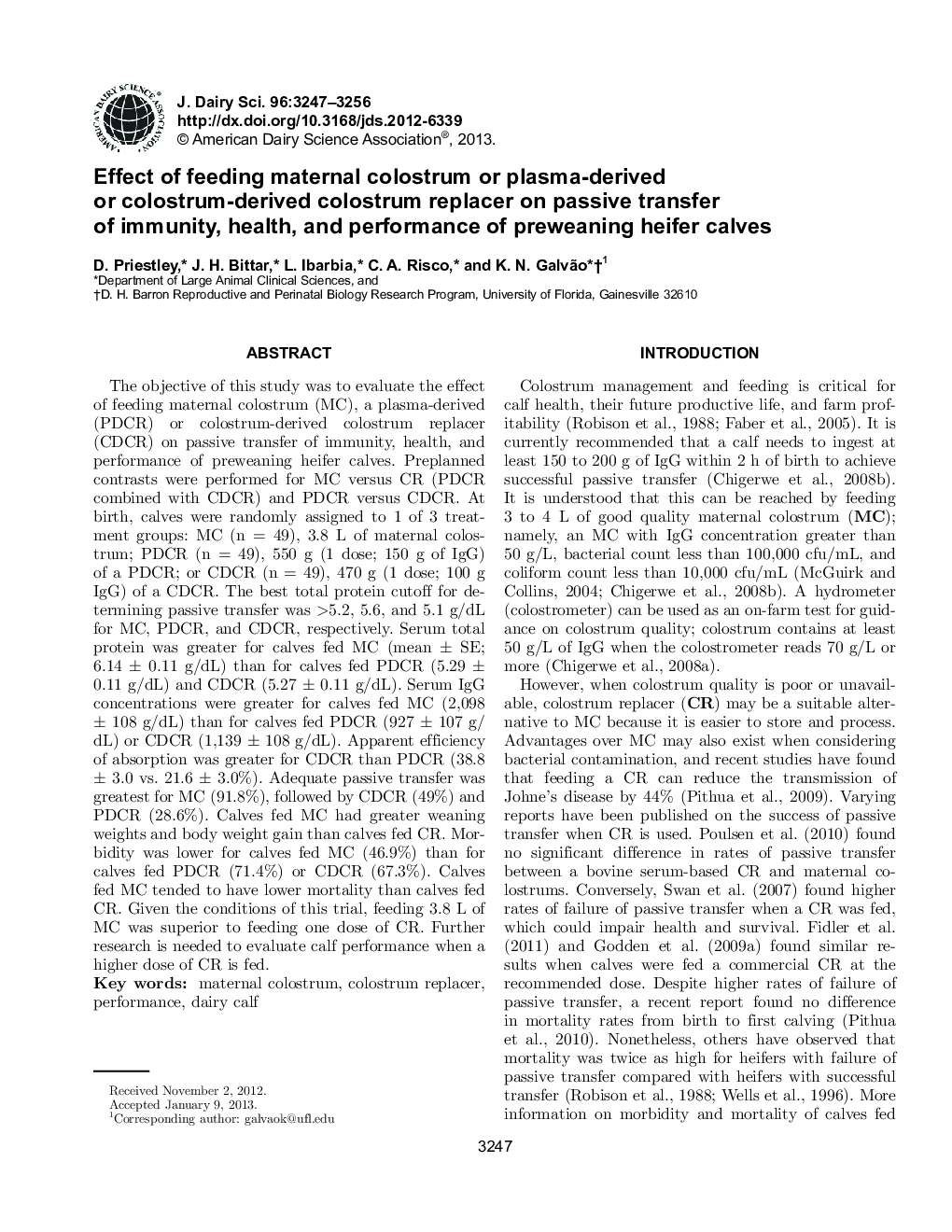| Article ID | Journal | Published Year | Pages | File Type |
|---|---|---|---|---|
| 10978465 | Journal of Dairy Science | 2013 | 10 Pages |
Abstract
The objective of this study was to evaluate the effect of feeding maternal colostrum (MC), a plasma-derived (PDCR) or colostrum-derived colostrum replacer (CDCR) on passive transfer of immunity, health, and performance of preweaning heifer calves. Preplanned contrasts were performed for MC versus CR (PDCR combined with CDCR) and PDCR versus CDCR. At birth, calves were randomly assigned to 1 of 3 treatment groups: MC (n = 49), 3.8 L of maternal colostrum; PDCR (n = 49), 550 g (1 dose; 150 g of IgG) of a PDCR; or CDCR (n = 49), 470 g (1 dose; 100 g IgG) of a CDCR. The best total protein cutoff for determining passive transfer was >5.2, 5.6, and 5.1 g/dL for MC, PDCR, and CDCR, respectively. Serum total protein was greater for calves fed MC (mean ± SE; 6.14 ± 0.11 g/dL) than for calves fed PDCR (5.29 ± 0.11 g/dL) and CDCR (5.27 ± 0.11 g/dL). Serum IgG concentrations were greater for calves fed MC (2,098 ± 108 g/dL) than for calves fed PDCR (927 ± 107 g/dL) or CDCR (1,139 ± 108 g/dL). Apparent efficiency of absorption was greater for CDCR than PDCR (38.8 ± 3.0 vs. 21.6 ± 3.0%). Adequate passive transfer was greatest for MC (91.8%), followed by CDCR (49%) and PDCR (28.6%). Calves fed MC had greater weaning weights and body weight gain than calves fed CR. Morbidity was lower for calves fed MC (46.9%) than for calves fed PDCR (71.4%) or CDCR (67.3%). Calves fed MC tended to have lower mortality than calves fed CR. Given the conditions of this trial, feeding 3.8 L of MC was superior to feeding one dose of CR. Further research is needed to evaluate calf performance when a higher dose of CR is fed.
Related Topics
Life Sciences
Agricultural and Biological Sciences
Animal Science and Zoology
Authors
D. Priestley, J.H. Bittar, L. Ibarbia, C.A. Risco, K.N. Galvão,
